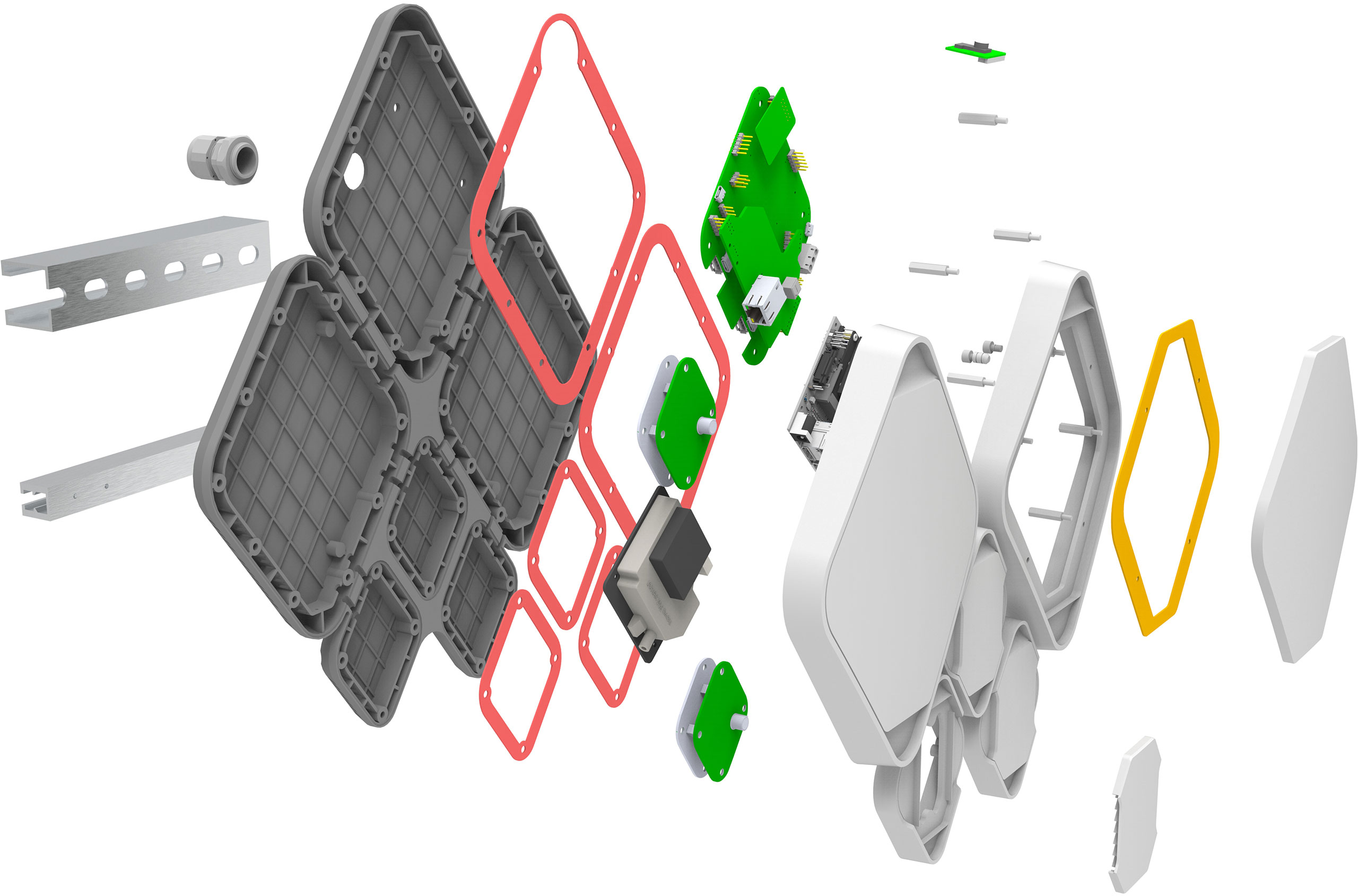The UMBRELLA Node

Over 100 nodes have increased the processing power capable of running Artificial Intelligence (AI) and Machine Learning at the edge of the network, enabling applications to be more responsive and secure than those that rely on the cloud alone.
A variety of radio modules can be used, including Bluetooth Low Energy, Wi-Fi, LoRaWAN and 4G, and these allow users to comprehensively evaluate which type of radio communication protocols are suitable for their IoT needs.
Equipment is housed in three large and three small diamond shaped plastic models. UMBRELLA nodes can be mounted on posts or walls in many settings, whether it is roadside on lamp posts, on a factory wall or in a shopping venue. For new projects, different hardware can be plugged in to the modules using USB 2.0. They can be remotely connected to the programmable wireless radios, or physically plugged into the modular and standard based digital and analogy interfaces such as I2C, SPI, UART and I/O ports.

Computing Power
- All nodes are powered by a Raspberry Pi 3+
- Edge capable nodes are powered further by a Jetson Nano
Radios
- Nordic Semiconductor nRF52840 with Power Amplifier – capable of both BLE and 802.15.4 using Contiki-NG
- Texas Instruments CC1310 – 868MHz long-range radio supported by Contiki-NG
- HopeRF RFM95W LoRa transceiver
- RAKwireless RAK2247 LoRaWAN gateway (on selected nodes)
- GPS receiver for time synchronisation
- Wi-Fi radio for backbone connectivity
- 4G cellular dongle for backup connectivity
Sensors
- Air Quality – VOC Index, Temperature, Humidity, Air Quality Index
- Multi-gas – RED, OX, NH3
- Particulate – PM2.5, PM10
- NO2
- OX – oxidising gas for ozone and nitrogen dioxide
- Noise – for measuring ambient noise levels
Pollutants
PM is a common proxy indicator for air pollution. There is strong evidence for the negative health impacts associated with exposure to this pollutant. The major components of PM are sulfates, nitrates, ammonia, sodium chloride, black carbon, mineral dust and water.
Carbon monoxide is a colourless, odourless and tasteless toxic gas produced by the incomplete combustion of carbonaceous fuels such as wood, petrol, charcoal, natural gas and kerosene.
Ozone at ground level – not to be confused with the ozone layer in the upper atmosphere – is one of the major constituents of photochemical smog and it is formed through the reaction with gases in the presence of sunlight.
NO2 is a gas that is commonly released from the combustion of fuels in the transportation and industrial sectors.
SO2 is a colourless gas with a sharp odour. It is produced from the burning of fossil fuels (coal and oil) and the smelting of mineral ores that contain sulfur.
Other
A sky-facing camera for use with a street light monitoring use case.
